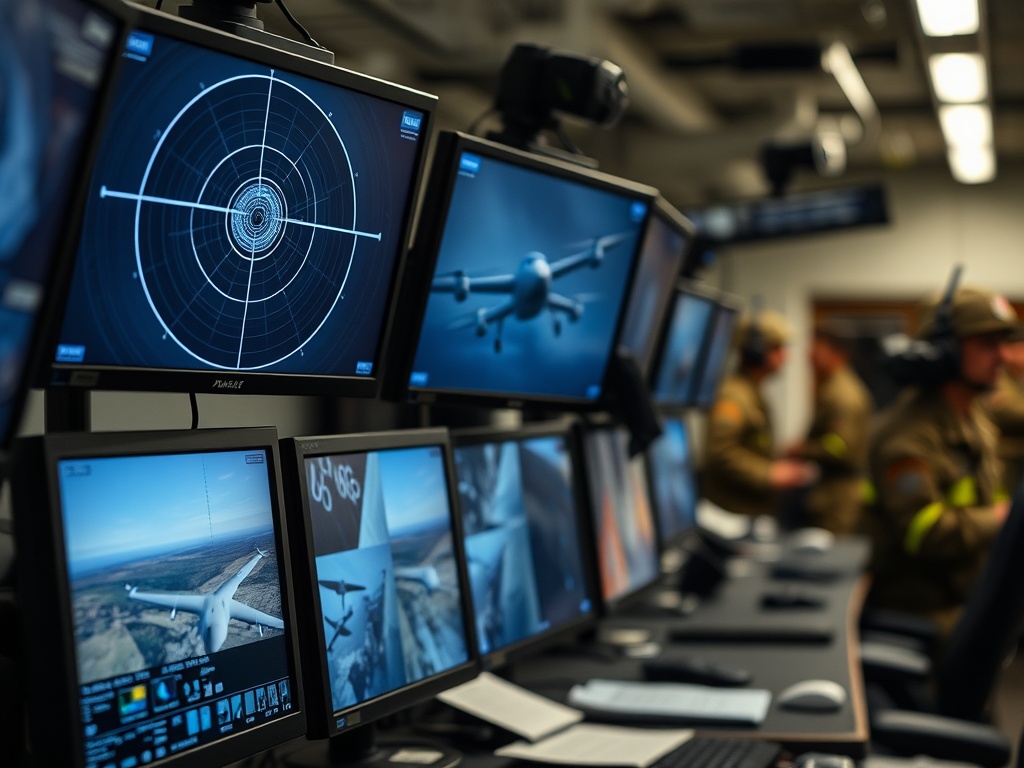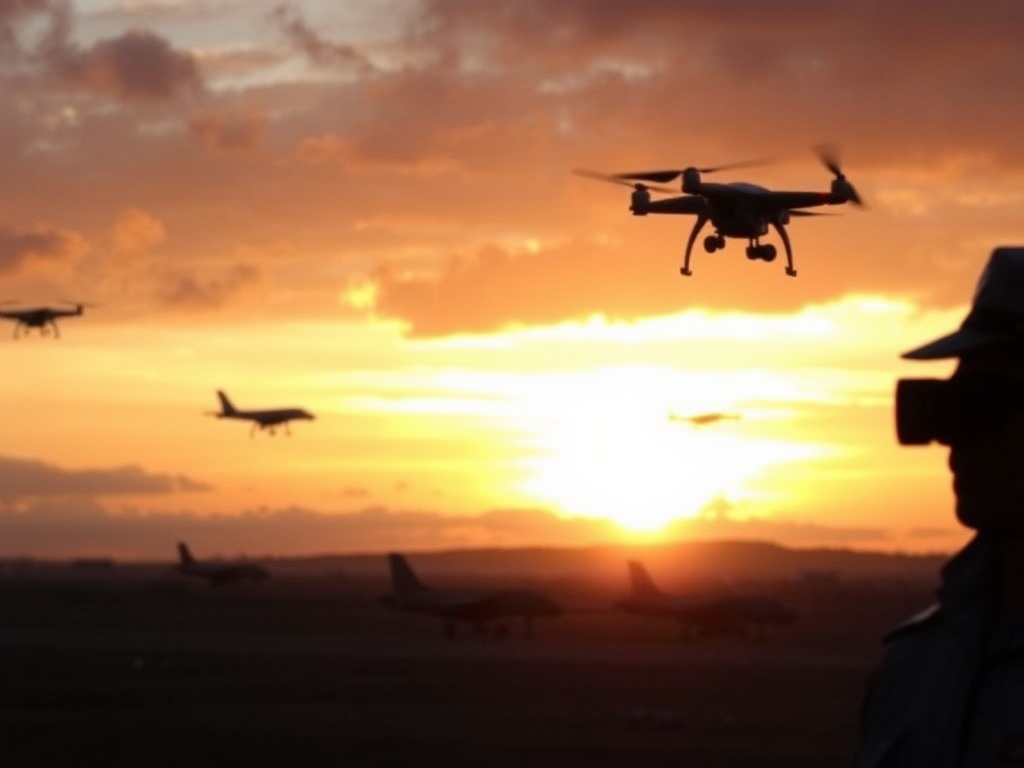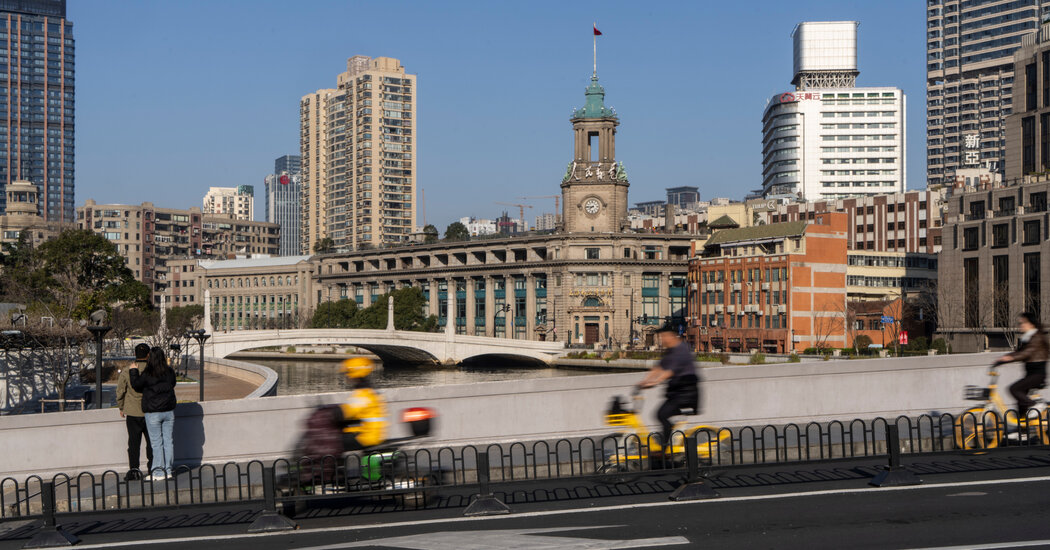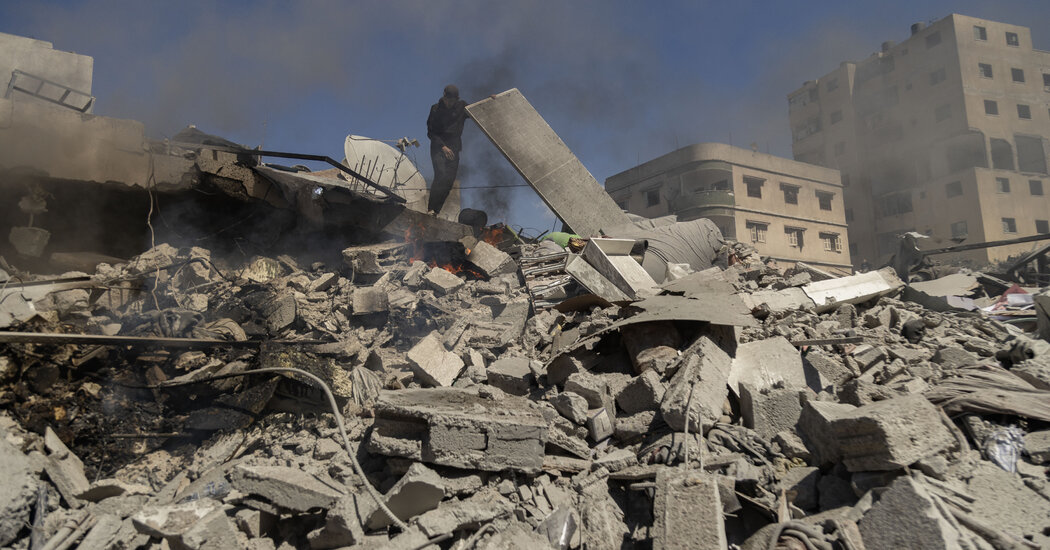Suspicious Visits Near UK Air Bases Raise Concerns Over Russian Intelligence
Three individuals with ties to Russian military and intelligence agencies have reportedly traveled to areas near top-secret UK air bases where unusual drone activity was detected, as revealed by The i Paper. This alarming discovery raises significant questions regarding potential Russian involvement in November’s incidents at RAF Lakenheath and RAF Mildenhall in Suffolk.
UK and US officials are currently investigating the possibility of Kremlin interference in these drone sightings, particularly given the sensitive nature of these air bases, which host advanced US Air Force aircraft and critical defense technology. As worries grow within NATO about Vladimir Putin’s increasing assertiveness, particularly in light of Donald Trump’s confrontational stance towards Ukraine during peace negotiations, these findings have become even more pressing.
In response to these revelations, senior Members of Parliament have called for a thorough examination of the new evidence following an extensive investigation utilizing open-source information that uncovered these suspect visits. Notably, one of the individuals was positioned just meters from the perimeter of RAF Mildenhall on the same day drones were reported in the vicinity.
The evidence stems from a database of open-source location data, provided to The i Paper by a former intelligence officer who monitors movements linked to hostile state cyber threats. The investigation highlights several key points:
- An individual, who has frequently been seen at the Russian Embassy in Berlin over the past year, arrived in the UK in early May, coming alarmingly close to the perimeter of RAF Mildenhall during the drone incursions in November;
- Another individual, who was present at Russia’s largest military facility in Tajikistan earlier in February 2024, arrived in the UK in May and made multiple visits to remote areas surrounding RAF Mildenhall before returning to the Russian military base within two months of the drone sightings;
- A third individual, known to have connections with a facility operated by Russia’s main intelligence agency (GRU) in Moscow during 2023, flew into London Stansted in August of last year. This person subsequently visited areas around RAF Lakenheath and RAF Mildenhall throughout September and October before returning to Russia via Turkey, where they spent time near a military district outside Moscow.
It is suspected that at least two of these individuals may have taken on seasonal work as fruit pickers near the airbases, reportedly visiting fields close to the installations during the night. While this evidence does not definitively prove Russian involvement, a former intelligence officer noted that fruit picking could serve as an “ideal cover” for Moscow’s intelligence operatives. Drones have emerged as valuable tools in international espionage, allowing operatives to infiltrate sensitive restricted zones and evaluate the responses of security forces. These drones can also be equipped with specialized surveillance gear to conduct reconnaissance missions.
The Drones: Instruments of Disruption

The first reports of the unmanned aerial vehicles emerged on November 20, with sightings over and around RAF Lakenheath, followed by similar incidents over the next two days at RAF Mildenhall, RAF Feltwell in Norfolk, and RAF Fairford in Gloucestershire. Concurrently, the German military announced it was investigating suspected Russian espionage following six drone sightings over an airbase in Schwesing, where drones also entered restricted airspace above facilities used for training Ukrainian soldiers on Patriot missile defense systems.
Aerial photography of Royal Air Force Lakenheath (Photograph: David Goddard/Getty)
The German military categorized these incidents as potential espionage, alerting their intelligence services according to the German newspaper Süddeutsche. A month after the UK incursions, drones were observed over the largest US Air Force base in the world, prompting an investigation by the Federal Bureau of Investigation (FBI). The drones spotted around Wright-Patterson Air Force Base in Ohio led officials to temporarily shut down the airspace. Investigations are ongoing, but the identities of the drone operators remain unknown. Similar drone sightings were reported in Denmark, where approximately 20 drones were seen over the port of Koege, prompting an investigation by the country’s domestic intelligence service.
Despite the deployment of 60 British troops, including counter-drone specialists, to the affected UK facilities, and a Ministry of Defence investigation, no arrests or charges have been made in connection with these disruptive activities. A senior former British military intelligence official who reviewed the database shared with this newspaper indicated that it suggests significant Russian “grey area activity,” referring to espionage operations conducted in a state of neither peace nor open warfare.
This official raised concerns about the UK’s measures to monitor and secure sensitive defense sites, stating, “On initial reflection, this is not surprising; this kind of activity has been prevalent in the UK and Europe for years. The real question is where else this activity is occurring, and which sensitive areas in HMG’s [Government] operations are exposed to the same threats of external grey area activity.” The data is available to UK and US officials investigating the drone sightings, as reported by The i Paper. A number of senior politicians have urged the Ministry of Defence to reassess the evidence.
Julian Lewis, a former Tory Chair of the Defence Select Committee, remarked, “When the US and British authorities detected the drone intrusions at both airbases last November, they stated that investigations were underway. Meanwhile, there is credible evidence here of the possible presence of GRU-linked operatives near Lakenheath and Mildenhall. I will be urging Ministers to consolidate the findings of all these investigations and deliver a statement in the Commons as soon as possible.”
Tom Tugendhat, the former Security Minister, emphasized that these findings “demand urgent investigation” by the MOD and UK intelligence services. “Russian intelligence is attempting to recruit criminals to conduct sabotage operations across Europe,” he stated. “This strongly suggests an emboldened Kremlin presence here in our country.”
Understanding the Data
In the digital age, our online footprint serves as a crucial tool for governments worldwide to identify and neutralize potential threats. By analyzing diverse data sources—financial documents, airline reservations, mobile phone records, social media activity, and location data—governments can pinpoint individuals of interest. In recent years, this methodology has sparked controversy regarding public privacy; however, many private security firms are leveraging these tools for positive outcomes—detecting terrorists, criminals, and foreign operatives hidden within society.
The i Paper has been in discussion with several companies utilizing open-source information to trace individuals associated with hostile states. By monitoring this data for overlaps with state-linked facilities or actors, analysts can identify potential operatives and construct a digital profile of their activities. This practice has become a vital element of modern intelligence gathering and is widely adopted by Western governments. The UK Government is actively seeking new legal avenues to retrieve data as part of its national security efforts.
Sources provided specific information regarding the RAF bases to this newspaper in the interest of safeguarding national security and raising public awareness about the scale of potential foreign interference within the UK. Evidence suggesting Russian links to the drone sightings follows a recent incident where the Royal Navy was compelled to escort a Russian spy ship, the Yantar, from UK waters after it was detected traversing the North Sea. Defence Secretary John Healey remarked that the vessel was utilized for intelligence gathering and mapping the UK’s essential underwater infrastructure, calling it “another example of growing Russian aggression.” He added, “I want President [Vladimir] Putin to hear this message: we see you, we know what you’re doing, and we will not hesitate to take robust action to protect this country.”
Fruit Picking: The Ideal Cover for Russian Agents
In the months leading up to the drone sightings, two of the identified individuals reportedly traveled to the UK from Russian military and intelligence facilities and appeared to have stayed at a caravan park for seasonal foreign fruit pickers located near the British air bases. The UK agricultural sector relies heavily on migrant workers to harvest crops, particularly during the summer months. Labor shortages stemming from the pandemic and Brexit have led the UK government to issue over 45,000 seasonal worker visas last year.
Matthew Dunn, a former MI6 intelligence officer experienced in field operations and the management of agents, suggested that working as fruit pickers offers an “ideal cover,” aligning with Russian intelligence tradecraft. He stated, “If you are operating in a rural area such as Suffolk, blending in as a fruit picker makes perfect sense. If I were in GRU headquarters deciding to deploy operatives to conduct casual surveillance around these high-security air bases, fruit picking would provide the perfect cover. These individuals are effectively ‘grey people’ and are present in large numbers.” He added, “It’s simple, but simplicity is often the most effective approach.”
The location database indicates these individuals spent considerable time traversing nearby fields, suggesting they may have been working as fruit pickers during the week while conducting nighttime or weekend visits close to the airbases. The i Paper visited the sites associated with these individuals to attempt to ascertain their identities. A manager at the caravan park confirmed that they primarily accommodate workers from Central Asia on six-month contracts through government schemes. While they asserted that their fruit pickers would not typically work near the RAF bases, they acknowledged the difficulty in monitoring all comings and goings at the site.
It remains unverified whether the individuals were indeed employed as fruit pickers, and there is no indication of any illegal or improper activities by any company or farm associated with these individuals.
Why These Russian Links Are Concerning
The first individual has connections to the Russian Embassy in Berlin, which has been a focal point for controversy in recent years and serves as a significant hub for Russian espionage activities in Europe. In 2023, a British Embassy security guard in Berlin was apprehended for leaking sensitive information to Russian diplomats. David Ballantyne Smith was caught in an undercover MI5 operation after providing names, addresses, phone numbers of colleagues, and documents regarding security passes to the Russian embassy.
The second individual, believed to have been active around the RAF bases prior to the drone sightings, is linked to a highly secretive base belonging to Russia’s GRU. This agency has been implicated in various espionage operations across Europe and the US. The unit, first disclosed publicly in 2019, has been associated with foreign assassinations and destabilizing activities in multiple European nations. The individual in question is connected to a GRU facility in Moscow that specializes in surveillance operations, though little is known about this clandestine unit; experts familiar with the database state it focuses on technological development and military intelligence research.
The third individual is associated with Russia’s largest military installation beyond its borders. Based in Dushanbe, Tajikistan, the Russian 201st Military Base is responsible for commanding the majority of Russian ground forces operating in Central Asia, encompassing various units, including motor rifle, armored, artillery, reconnaissance, air defense, and signal troops.
What Russia Stands to Gain from Drone Operations Over Air Bases
Martin Melia, a former British Army Lieutenant Colonel with expertise in Intelligence, Surveillance, and Reconnaissance (ISR) operations, reviewed the data, which he described as showing “compelling” evidence of Russian “influence activity” aimed at “demonstrating their ability to operate freely within a NATO member nation.” He noted that targeting US bases in the UK offers a “two-for-one” advantage, potentially fostering tensions between US Forces Europe and the UK Ministry of Defence.
Melia explained, “This operation compelled both the UK and USAF to respond visibly, which could have financial implications totaling hundreds of thousands of dollars/pounds and potentially disrupt routine flight training and operations. Ultimately, operations like this send a message; this evidence might provide a crucial missing piece of that puzzle and should be regarded accordingly.”
The US Air Force confirmed that the drones were identified as “small unmanned aerial systems” that “varied in size and configuration.” Melia posited that commercially available drones could have been deployed “in a harassing manner” to test the Flight Restriction Zone over the bases, while more specialized drones equipped with thermal cameras or radiological detection systems might have been used for surveillance purposes. “This is an influence activity,” he asserted. “While surveillance may not have been the primary goal, it offers some benefit, as you can gauge the enemy’s reaction by firing blindly in their direction.”
The Kremlin’s Use of Criminal Gangs for Covert Operations
The revelations surrounding these incidents heighten concerns regarding the Kremlin’s capability to recruit individuals residing in Britain to assist with their covert operations. While the full extent of the activities conducted by the three individuals remains unclear, any interactions between Russian intelligence and individuals already living in the UK are a focal point in the ongoing investigation into the drone incursions.
Intelligence sources have expressed alarm over the effectiveness of Russian intelligence in recruiting individuals in Britain, with low-level criminals being particularly vulnerable to recruitment motivated by financial gain, ideology, or coercion. The use of criminals allows the GRU to orchestrate attacks that are challenging to attribute and difficult to prevent.
In October, MI5’s Director General Ken McCallum outlined the dangers posed by Russia employing third parties to carry out “dirty work.” He indicated that Russia is engaged in a “sustained mission” to create “chaos” using “criminals as proxies—from international drug traffickers to low-level crooks” to execute sabotage, espionage, and assassination operations within the UK.
McCallum warned, “The more eye-catching shift this year has been Russian state actors resorting to proxies for their unsavory tasks, including private intelligence agents and criminals from both the UK and third-party nations.” Despite the deployment of 60 British troops, including counter-drone specialists, to the affected UK facilities, and an investigation by the Ministry of Defence, no suspects have been apprehended or charged regarding these disruptive activities.
A Ministry of Defence spokesperson stated, “We will not be offering a running commentary on operational security matters, but the public can be assured that we take threats seriously and maintain robust measures at defense sites.” A spokesperson for the US Air Forces Europe confirmed, “We can validate that small unmanned aerial systems were observed in the vicinity of and over RAF Lakenheath, RAF Mildenhall, and RAF Feltwell between November 20 and 22. The number of UASs fluctuated and they varied in size and configuration. The UASs were closely monitored, and installation leaders determined that none of the incursions impacted base residents or critical infrastructure.” They added, “To safeguard operational security, we do not disclose specific force protection measures, but we retain the right to protect the installation. We continue to monitor our airspace and collaborate with host-nation authorities and mission partners to ensure the safety of personnel, facilities, and assets.”
Analysis: The Escalating Threat of an Assertive Putin
By Richard Holmes
Russia has a well-documented history of conducting intelligence operations on UK soil. Under the Kremlin’s directive, agents have poisoned London with radioactive isotopes, deployed lethal toxins across rural England, and plotted to disrupt vital services. The UK government has often faced criticism for its reactive approach to these threats; it took over eight years to initiate a public inquiry into the assassination of former Russian spy Alexander Litvinenko.
Undoubtedly, dedicated professionals within our intelligence agencies work relentlessly to safeguard the UK from hostile state threats. However, the directives from Westminster have not always reflected the urgency of these threats. The recent discovery of Russian operatives possibly linked to a series of drone incursions over RAF bases underscores how Putin, emboldened by the West’s historical weak responses, continues to undermine the UK’s national security apparatus.
At least three individuals with connections to Russian diplomatic, intelligence, and military networks have come to the UK, visited sites adjacent to critical air bases, and returned to Russian facilities during the period surrounding the drone sightings. The full identities of these individuals linked to the location data have yet to be determined. The airbases, which house US air force personnel, are of immense significance—not only because they host advanced US military technology but also due to their representation of the strategically vital relationship between the UK and its closest ally.
This relationship has been strained following a shift in US foreign policy regarding Russia’s invasion of Ukraine. In recent weeks, Donald Trump and his associates have openly criticized Europe’s insufficient stance, echoing sentiments from the Kremlin about the region’s capacity to defend itself. The operations of Putin’s emboldened intelligence apparatus will test the resilience of the UK’s “special relationship” with the United States.




